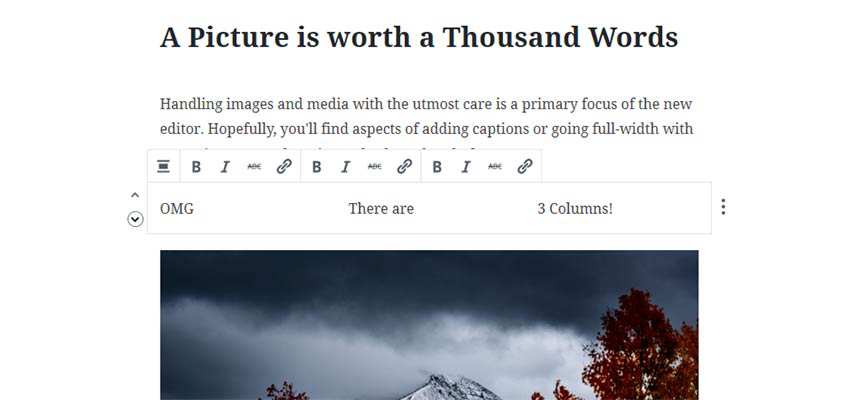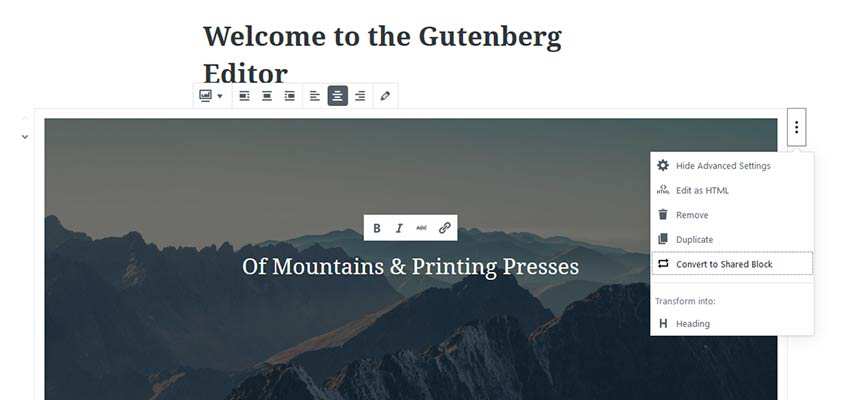Those of us who work with WordPress on a daily basis have been keeping close tabs on Gutenberg, the completely revamped editor scheduled to be released with version 5.0 of the world’s most popular CMS. It looks like it will be a monumental change to the way we create and edit our web content.
And, that of course has led to a ton of concern about existing sites breaking – either due to an unsupported plugin or some other code gremlin that feasts on our hard work.
But the optimist in me (sometimes I have to dig really far down to find it) is actually excited for this change – or, at least what it represents. Here’s why:
WordPress Needs More Layout Flexibility
I’m very much into customizing WordPress through various methods, with custom fields being my favorite. I also refuse to use a page builder plugin because of the (perceived) bloat. That leaves me between a rock and a hard place when trying to do something more than a standard one column layout.
Doing this with custom fields works well enough. But there is some setup involved that takes time away from other tasks on my to-do list. It’s a process of setting up the fields and then adding code to my theme that makes the formatting just the way I want it. The advantage of this is that a client has to try really hard to break the layout.
But the fact that WordPress has no built-in way to add multiple columns of content (well, other than a hand-coded table) has been a serious Achilles heel. I don’t want to have to build fields or even use a plugin every time I want to place two paragraphs side-by-side. Just think: If professionals are frustrated by the process, how might a typical user feel?
This is one of the things Gutenberg brings to the table. It’s far from the only thing the new editor has to offer, but it’s a simple feature that has been missing for years.

Touching One Thing Shouldn’t Break Everything
Beyond the humble multi-column layouts, the block-based UI might also be a boon to content creators. Because each block is its own entity, you can add/remove/swap them without negatively impacting the surrounding content. If I had a nickel for every time I’ve unintentionally broken something while editing another part of a post I could probably afford a Tesla.
Another of the most frustrating issues with WordPress has been that different themes and plugins find various methods to hack their way into the editor. Some add a TinyMCE button, others use custom fields. It’s incredibly inconsistent. Blocks give theme and plugin developers a more standardized way to customize the editor. Custom blocks can be built for those delicious layouts I mentioned, to add in specialized content from a plugin or any number of creative uses.
The ability to create “shared” blocks is also quite handy. This feature enables users to save a particular block for repeated use in other areas of their site. This means that we no longer have to carefully reinvent the wheel every time we want to implement a similar piece of content. Instead, it takes just a couple of clicks to accomplish.
Blocks are a big step forward in terms of building posts with more diverse types of content.

It’s Always Sunny in Gutenberg
When I look at Gutenberg as just an editor, I see a tool that will help users of all skill levels do the things they want with much more ease than the “classic” version. This is actually something I wasn’t so sure of in the beginning.
With all of the controversy regarding the process of building the editor itself, it’s easy to get sucked into the trap of dismissing the project before it’s even been launched. I get it. The lines of communication with the WordPress community could have been (and still could stand to be) improved.
There is also great uncertainty about which plugins may or may not be compatible. This is also a legitimate concern.
But looking at the tool on its own and minus all the hype, Gutenberg is exactly what WordPress needs and has been missing. The web has changed and so have the requirements of content creators. Gutenberg will help WordPress continue to evolve along with those ever-changing needs.
Related Topics
Top